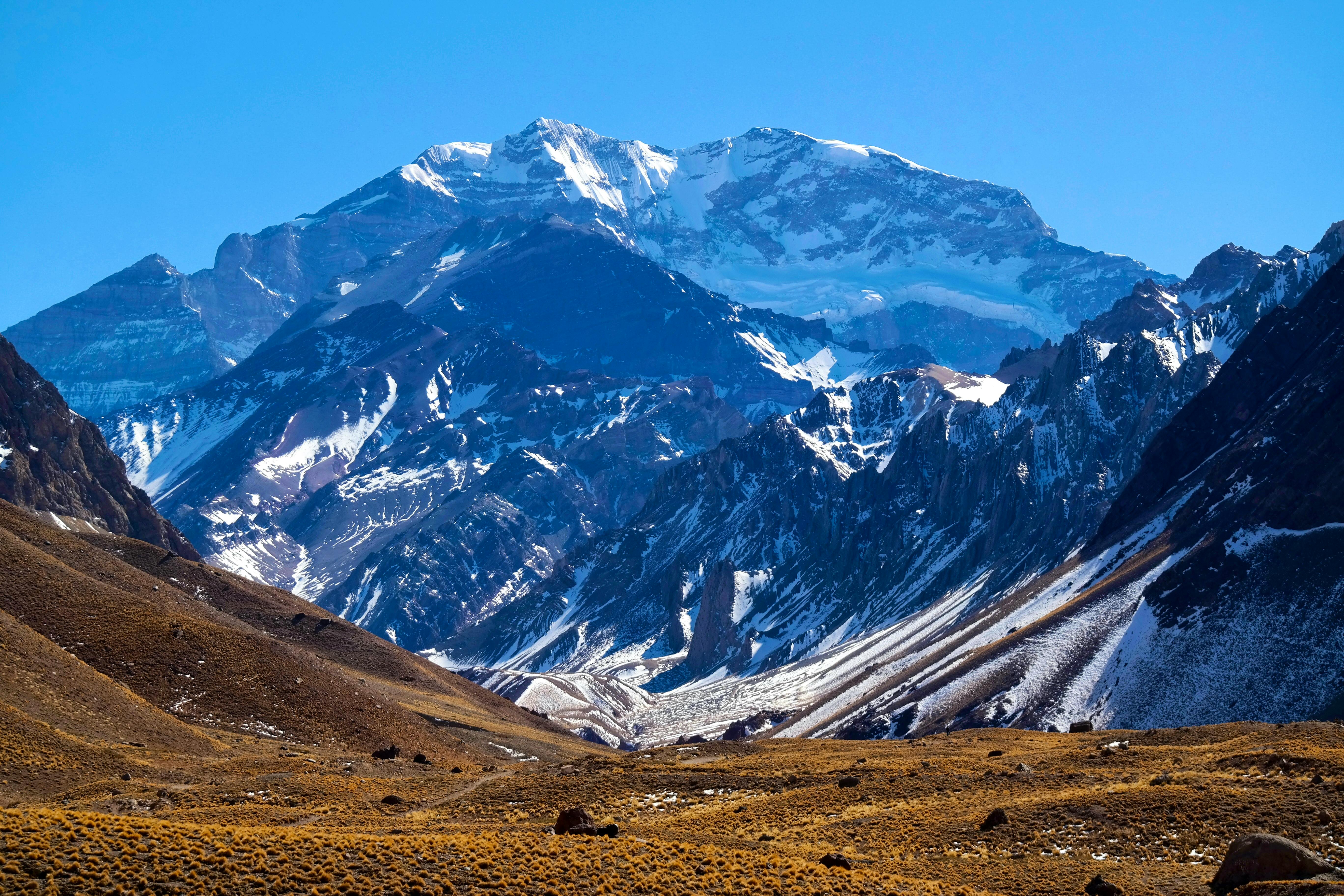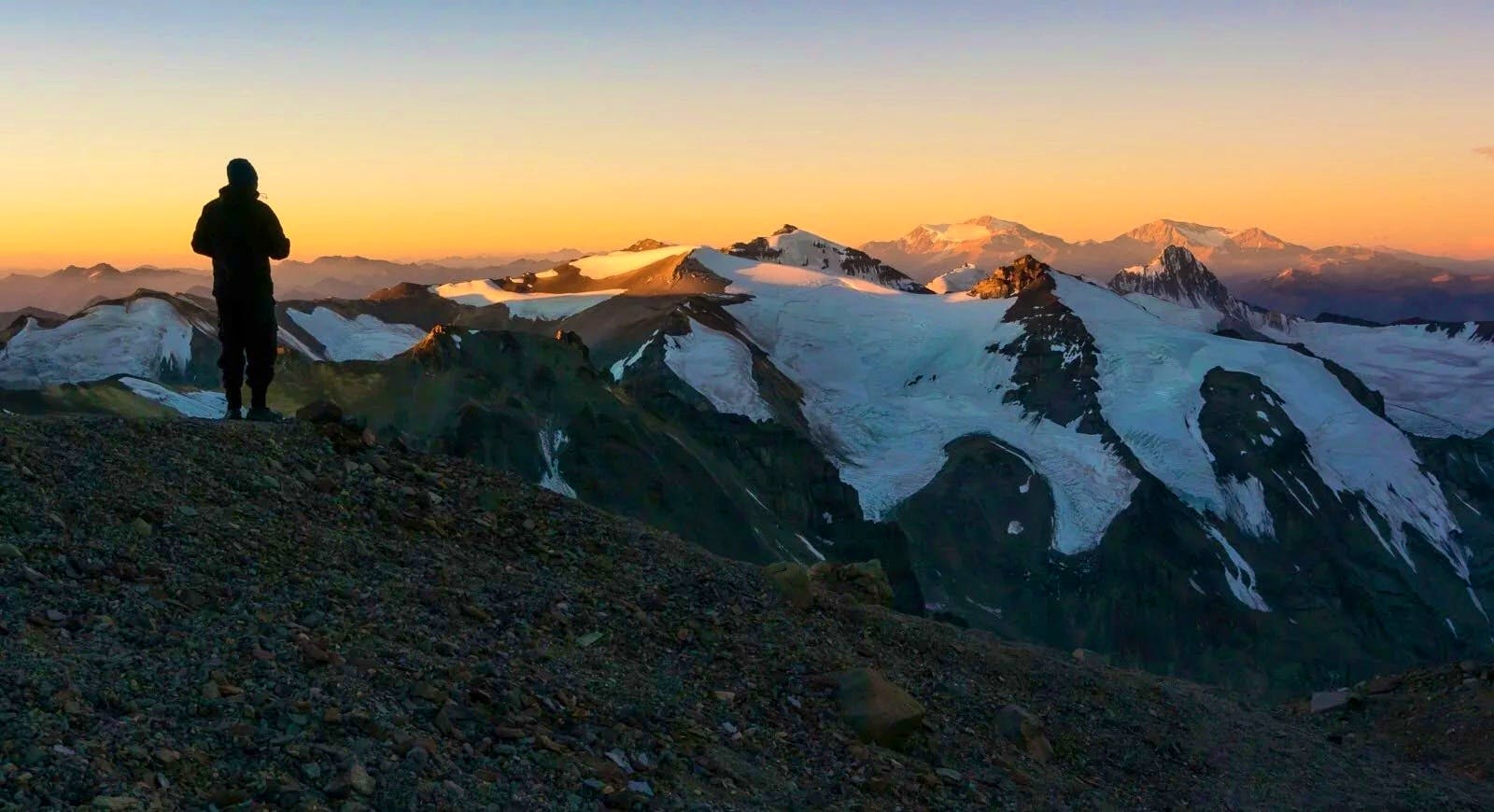Aconcagua Difficulty: How Hard Is It Really?
Many people with mountaineering on their holiday to-do list and heading to Argentina will ask us how hard it is to climb Aconcagua.
At Skyhook, our answer is to always come prepared; Aconcagua is a challenging and, in some parts, technical hike, mostly because of the unpredictable weather and high elevation.
Let's tell you more below.

How Hard is it to Climb Aconcagua?
Climbing Aconcagua is moderate to challenging because the weather and terrain in some sections can affect your progress in a flash.
It is referred to as the highest trekking peak on Earth. Aconcagua is also one of the highest Seven Summits of the seven continents and the highest peak in the Andes mountains and South American region.
At 6,962 metres above sea level, Aconcagua takes around three weeks to hike, all while carrying around 12 kg of gear. So, if you have not attempted to scale a huge mountain before, then this can be your toughest hiking experience.
Experienced guides may insist on having climbers that have at least attempted other relatively easier climbs like Kilimanjaro, Mt. Rainer, or Mt Shasta and have had basic mountaineering experience at 4800-5500m of elevation before.

Level of Fitness Required to Climb Aconcagua
To save on energy and boost recovery, you will be paced, which may make up for lower cardio fitness.
However, to accurately gauge whether you are ready for the Aconcagua climb difficulty, consider a typical 8-hour daily hike with elevation gains ranging between 500m and 1000m. Daily treks will range between 13 and 26km while carrying a 12kg mountaineering backpack (in varied weather conditions) back to back.
After your daily trek, you will need to assist the team with setting up camp and then spend the night outdoors in winter conditions.
If that sounds like a challenge you can handle, then you should be ready for the Aconcagua expedition. The better conditioned you are physically and mentally, the higher the chances are that you will reach the summit.

How Many Hiking Routes are There on Aconcagua?
The three main Aconcagua routes for getting to the summit have been described as long walks rather than climbing expeditions. But still, part of these walks will include sections of traversing hard ice with ice axes and crampons and trudging through deep snow.
They all range from moderate to technical hikes:
1. The Normal Route
This is the most straightforward and commonly chosen path to the summit. Skyhook also offers this Aconcagua Normal Route trip.
It approaches the mountain from the northwest, a non-technical climb that is often considered a trekking route.
Despite its relative simplicity, you should not underestimate the challenges posed by high altitude and the need for proper acclimatisation.
2. The Polish Traverse Route
The Polish Traverse Route, also known as the False Polish Glacier Route, combines elements of trekking with more challenging sections.
It approaches from the east, crossing the base of the Polish Glacier, and then joins the Normal Route for the final ascent. This route offers a mix of scenic beauty and a taste of glacier travel without the technical demands of a full glacier climb.
3. The Polish Glacier Route
For those seeking a more technical challenge, the Polish Glacier Route presents a direct approach up the glacier itself.
This route requires ice-climbing skills and the use of crampons and ice axes. It's a demanding path that rewards climbers with the thrill of a true high-altitude ice climbing experience.


Latest Deals
How Hard is the Aconcagua Summit Day?
Summit day will be the longest, most difficult day, with 7-10 hours of climbing. You'll go from 5,950 metres at high camp to the 6,962-metre summit. The day starts early, which will be cold because Aconcagua is freezing before sunrise.
You'll start the hike from Camp 2, navigate steep terrain and overcome the infamous Canaleta, a practically vertical couloir near the summit.
Being at a high altitude where the air is thin means breathing will be tougher and every step forward will demand effort. Here, the rest step and specifically targeted breathing techniques will help you maintain the right heart rate and sufficient energy to reach and enjoy the summit and return safely to Camp 3.

How to Successfully Climb Aconcagua
1. Gear
The harsh weather on the mountain's slopes is the biggest impediment to your success regardless of how ready or trained you are. Truth be told, waiting out a ravaging blizzard, or the sudden change from an inviting blue sky to a heavy storm with hail can easily take the enthusiasm out of you.
But, high-quality gear and clothing can help you wait out the storms. Ensure you bring enough clothing for layering (think down jacket with a hood and a sweater, with a vest beneath), sturdy boots with good traction, and trekking poles and skin protection essentials.
Also, don't forget any medication or first aid kits you'd need on the mountain.
2. Physical Training
You also want to have sufficient training and physical conditioning as the Aconcagua is quite unforgiving to climbers that show up unready.
We encourage you to build a structured Aconcagua training plan while gradually increasing the weight you carry to boost your endurance and strength for rough terrain. Train for 4-6 months and eat a balanced diet to prepare your body for the arduous task ahead.

3. Choose the Right Guides
Scaling any mountain is inherently dangerous due to the risk of altitude sickness, dehydration, slips and falls, and navigational errors. The 90km/h winds and blizzards only make the Aconcagua that much more dangerous.
A professional and experienced mountain guide certified by the Mountain Guides Argentine Association and the Provincial School of Mountain and Trekking Guides (EPGAMT) should, thus, be part of your plan for safety and success.
4. Acclimatise
Finally, a proper acclimatisation schedule that allows for getting used to the gradually reducing oxygen levels significantly improves your chances of scaling to the top.
When climbing, you will have rest days that give you time to get used to the air around you. During these days, ensure you relax enough (we recommend reading a book or playing cards with your mates) to stabilize your heart rate and heal your muscles.

Best Time to Climb Aconcagua?
Ordinarily, the Aconcagua climbing season is in the summer months of South America (between November and March) with January and February offering the easiest climbs in terms of weather.
You want to book your trip in advance and include the Government Permit to enter the Aconcagua Provincial Park for the expedition ($800-$1100 per person).
Final Thoughts:
Aconcagua is a challenging mountain to climb, and you will require adequate targeted training, gear, supplies, and grit. Even the finest athletes and mountaineers have been humbled by this mountain!
That said, with Skyhook's logistical support and adequate preparation, climbing the Aconcagua is doable and highly rewarding.
And while the Aconcagua may push your physical and mental tenacities, you will see some of the most breathtaking sceneries on Earth. It is also an excellent training ground for higher, more demanding peaks like Mount Everest.
Related Skyhook Articles
Aaconcagua vs. Kilimanjaro
Climbing Aconcagua without a guide
Other Articles
Find your next adventure
Why Skyhook?
Join over 27,000 Skyhook adventurers who've used our platform to book directly with our vetted local guides, at local prices (we never markup).
Expert Local Guides
Experienced local guides, handpicked by us.
Best Prices
Never pay a markup on the local guide's price.
Exclusive Club
Earn loyalty rewards every time you travel.
Great Social Vibes
Small group tours provide a richer experience.
Stellar Feedback
Over 2,800 reviews, average of 4.9/5 stars.











